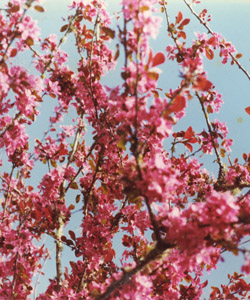 John Foster
John Foster
Commentary - Four Seasons on the Farm

1980 – 1984, Oil on hardboard, Length 14.4m, Height 2.4m
A calendar contained within a fence
Farm life depends on an annual cycle. The seasons influence daily tasks of caring for animals and the land. Summer is spent shearing sheep and coping with water shortages. In winter one battles mud and feeds out hay to the cattle. In the spring lambing season there never seem to be enough hours in the day to complete the work.

The mural is laid out in 12 months, with January on the left. A grey post separates each month from the next.
Each month has three battens, held by the seven horizontal wires running through the whole mural. Each day is a space seen through the wires and battens, and read sequentially downward.
The spaces below the fence also count as individual days, but contain a panorama view typical of the month.

Drafting sheep
Each picture is a scene of farm life that occurs at the particular time of the year. In February for example, the sheep are drenched, the cattle are drafted, some of the sheep die, and the garden is watered. Above the fence is a sky typical of the time of year.
A seasonal change is evident from left to right: summer dryness, to autumn green, to winter grey. The seven basic colours of the rainbow, with white, are mixed to produce all the subtle hues and tones evident in the Northland landscape.
This was the first of John’s murals to have all the panels made before painting was begun. It is constructed of whole sheets of hardboard supported by a timber frame.



Printmaking Concurrently with the mural over 150 woodcut prints were made using the technique of the reducing masterplate. Many of the woodcuts feature in ‘Four Seasons on the Farm’, a School Journal published by the Department of Education in 1985.
Series also includes:
- 115 print editions

Four Seasons on the Farm in progress